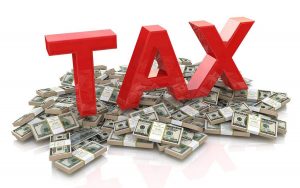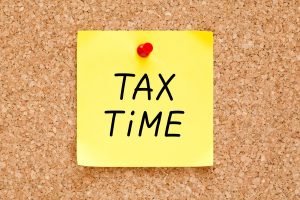The recent KRS Insights Breakfast featured Randi Kochman, Esq., chair of the Cole Schotz Employment Law Department. Randi spoke about best practices for hiring and documentation, and the complexities of family and medical leave.
For those who missed the breakfast, we wanted to share some of Randi’s insights.
 Best practices for interviewing job candidates
Best practices for interviewing job candidates
There are laws about what you can and cannot ask when interviewing a job candidate. “New Jersey is an employee-friendly state and there’s a long list of what you can’t ask by law,” said Randi. For instance, you can’t ask:
- Are you married?
- Do you have children?
- Where are you from?
- Are you pregnant or planning to get pregnant?
The best practice – and one that will keep you out of trouble – is to ask only what you need to know to determine if the applicant can do the job. You can ask, for example:
- Is there any reason you can’t be here from 8 to 4 and travel to California once a month?
- This job requires that you be able to lift 50 lbs. routinely. Are you able to do that?
She also recommended putting a salary range in any job ads. In some states, including New York, you cannot legally ask about salary history.
Bottom line: stick to asking questions that relate directly to the job qualifications.
Best practices for background checks
When you need to check out a potential new hire, you must comply with the Fair Credit Reporting Act (FCRA) and state law. “Hire a reputable firm to do your background checks,” Randi said. “There are specific forms that must be completed. These forms are very detailed and the potential employee must sign them.”
Using the Internet to check out potential employees can be risky. “There are potential problems when an employer learns information about an applicant from social networking sites that it is otherwise prohibited from obtaining, such as an applicant’s age, disability, or sexual orientation,” she noted. To reduce risk, Randi recommended:
- Having a comprehensive Internet background search policy for your company
- Using a third party, or “screened” employee to conduct any Internet background checks and send only information relevant to the employment search to decision makers.
- Training employees – especially supervisors – on the risks of conducting private Internet background searches on applicants.
Best practices for HR documentation
“There are a lot of areas in the employment world that can trip you up and documentation is a big one,” noted Randi. She went on to list the extensive number of documents your employee files should contain, including, but not limited to:
- Offer letters and employment agreements
- Background checks
- Job descriptions
- Confidentiality or non-compete agreements
The complexities of family and medical leave
How and when family or medical leave can be taken by employees can be complex. The Federal Family and Medical Leave Act (FMLA) applies only to employers with more than 50 employees within a 75 mile radius of the worksite of the employee. There are also specific eligibility requirements for employees who want to apply for leave under FMLA.
Leave laws also vary by state. In New Jersey, for example, the NJ Family Leave Act applies to employers with at least 50 employees (located anywhere) who have worked for at least 20 weeks during the current or previous year.
The Americans with Disabilities Act (ADA) and the NJ Temporary Disability Benefits Law (NJTDB) also have to be considered.
“Let’s say your employee comes to you and says they have cancer and need a leave of absence. It’s important to consider all the factors that can apply – FMLA, NJFMLA, NJTB, etc.,” said Randi. “Your company also should have in place a company policy for medical and disability leave.”
We’ve got your back
At KRS CPAs, our goal is to make it as easy as possible for you to get the advice and counsel needed, so you can focus on what matters most to you. The KRS Insights Breakfast Series offers timely and relevant information from experts like Randi Kochman, who can help your company avoid HR pitfalls by following best practices.
Visit our Insights page to subscribe to our newsletter and you’ll be notified about upcoming breakfasts plus other KRS news, events and resources.
With more than 20 years of employment law experience, Randi Kochman is dedicated to helping employers understand and navigate complicated and ever-changing employment laws so they can effectively manage employees, avoid costly mistakes, and focus on their core business. A recognized employment law expert, Randi was recently quoted in an article on tip pooling in the Society for Human Resources Management (SHRM) employment law blog.

 Best practices for interviewing job candidates
Best practices for interviewing job candidates Whenever a local industry trade show aligns with a KRS service offering or niche I look forward to an opportunity to get out and network with its exhibitors. I also find that the breakout education sessions are extremely relevant and offer insight to the business challenges faced by industry members. Recently I had the opportunity to attend the Specialty Food Associations’ Summer Fancy Food Show in New York City.
Whenever a local industry trade show aligns with a KRS service offering or niche I look forward to an opportunity to get out and network with its exhibitors. I also find that the breakout education sessions are extremely relevant and offer insight to the business challenges faced by industry members. Recently I had the opportunity to attend the Specialty Food Associations’ Summer Fancy Food Show in New York City. With the warmer weather and longer days of summer here, many business owners turn to golf and other outdoor activities for their business networking and development activities. A question I am often asked by my clients is whether they can deduct the dues for clubs at which they entertain customers or that otherwise may be relevant to their business.
With the warmer weather and longer days of summer here, many business owners turn to golf and other outdoor activities for their business networking and development activities. A question I am often asked by my clients is whether they can deduct the dues for clubs at which they entertain customers or that otherwise may be relevant to their business. The June KRS Insights Breakfast featured Jean Oursler, who is a speaker, author, and one of the country’s top business consultants. Jean shared with us the RESULTS Formula, which is a new way of thinking about goal setting and growing a business.
The June KRS Insights Breakfast featured Jean Oursler, who is a speaker, author, and one of the country’s top business consultants. Jean shared with us the RESULTS Formula, which is a new way of thinking about goal setting and growing a business. With food trucks, farmers markets and innovative “Jersey Fresh” products popping up daily, it’s no wonder New Jersey is known as a food industry hub.
With food trucks, farmers markets and innovative “Jersey Fresh” products popping up daily, it’s no wonder New Jersey is known as a food industry hub.




 Selling a vehicle outright or trading it in towards a new vehicle usually involves analyzing the economics of the transaction. However, tax factors can start to complicate things if that vehicle was used in your business.
Selling a vehicle outright or trading it in towards a new vehicle usually involves analyzing the economics of the transaction. However, tax factors can start to complicate things if that vehicle was used in your business. “A mediocre strategy with A-players executing with discipline will blow away your competition.” – Mike Goldman
“A mediocre strategy with A-players executing with discipline will blow away your competition.” – Mike Goldman President Trump has proposed a detailed tax plan that will revise and update both the individual and corporate tax codes.
President Trump has proposed a detailed tax plan that will revise and update both the individual and corporate tax codes.
